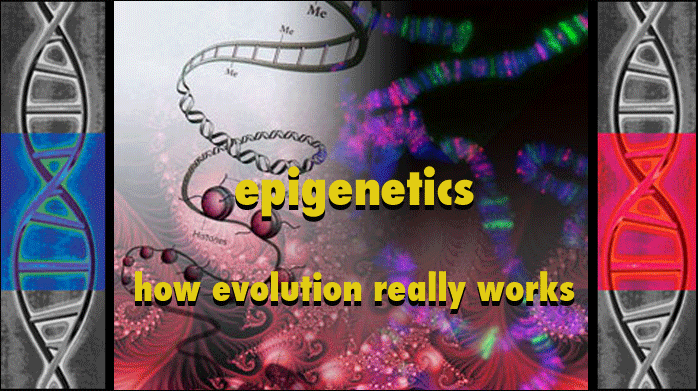
Less is more, more is less...
The general public was made aware of the discovery of epigenetics through an article in Time Magazine in 2010.
When researchers first looked at this population, they were expecting to find birth defects and inherited deficits from the near starvation conditions that persisted for years. Instead, they discovered that the offspring of the pubescent gluttons had an amazing decrease in lifespan of more than 32 years!
Animal studies have long confirmed the relationship between eating less and longevity (see viewzone article), and it is accepted that over-eating and obesity can shorten an organism's life through diseases such as diabetes and heart attacks. But these outcomes usually are apparent only to the offending organism -- not to their offspring. The Time Magazine article used this research to illustrate how epigenetics, caused by environmental factors, can have hereditary consequences that ripple through many generations. But there were two important questions that were not addressed: first, why would epigenetics punish the offspring for their ancestor's over-eating by shortening their lifespan? Second, how is it that the offspring of both males and females were effected? In mammals, the male produces sperm as needed during puberty and so the DNA is subject to environmental effects and presumably epigenetic adaptations. Research has shown, for example, that boys who smoked cigarettes at age 11 had male offspring that were more unhealthy and obese than children of non-smoking fathers. The toxins in cigarette smoke are suspected of altering the genes (Y chromosome) in their sperm [2]. Females, on the other hand, are born with a lifetime supply of eggs that are stored in their ovaries. These unfertilized eggs are complete. Their DNA is already established. Are their eggs still subject to epigenesis? Let's examine these two questions more carefully.
The Morphogenetic Field (again) On average, every human being consists of approximately 10 trillion cells. Inside each cell there are chemical reactions happening at the rate of more than 100,000 every second! [5] In every second approximately 10 million cells die. These dead cells must be replaced in a short period of time in order to prevent entropic decay. It cannot be predicted where and when a cell will die, but if the replacement rate is only slightly lower (or higher), the body will disintegrate quickly. A good example of this are the cells that line the intestines, which have an unusually large turnover rate. If the replacement rate should exceed the cell death rate by only a small percent, the body would rapidly die from an obstruction. Mechanisms such as bio-molecular control or chemical "messengers" are clearly not efficient enough to coordinate this life process. This activity requires a level of organization, coordination and overcontrol that must happen at the speed of light. Viewzone covered this topic extensively in our feature Does DNA Emit Light?. Rupert Sheldrake, with a PhD in biochemistry from Cambridge, is a fellow of the Institute for Noetic Sciences, founded by former astronaut Edgar Mitchell. In his 1981 book A New Science of Life: Hypothesis of Formative Causation he coined the term "morphogenetic field" for coordinating fields that govern the development and cooperation of living organisms. Sheldrake believed that DNA might actually function like a resonance coil (the double helix even looks a bit like radio coil) and receive instructions from the field. While this might explain the intra-cellular communication, it does not explain how an organism -- made of trillions of individual cells -- can send and receive information and use this information to create genetic alterations and adaptations. To make this theory plausible, we need to find some organ capable of communicating with every cell in the body, having some type of ion capability (since the methyl and histone molecular "switches" attach and inhibit the genes because of altered ion charges on the DNA)[8] and having the ability to interact with the electromagnetic spectrum to communicate with the so-called morphogenetic field. The Pineal Gland The pineal gland is a pea size structure in the brain that, amazingly, meets all of the above requirements needed to interact with the morphogenetic field and effect changes to the genes on a systemic basis. 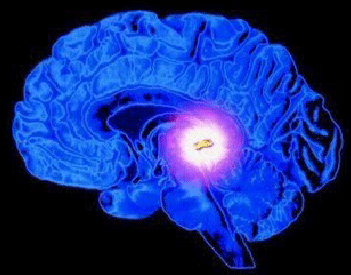
Piezoelectric crystals are material that has the ability to generate electric charges when their shape is deformed. You probably have experienced this phenomenon when you lit your barbeque grill. There is usually a spring mounted button that slams a piece of metal against a piezoelectric crystal and sends a spark to the burner, igniting the propane. Piezoelectric is also used in many microphones and guitar pick-ups. The movement of sound waves is enough to cause the crystals to deform, ever so slightly, and the resulting electrical charge is then amplified. The pineal gland could possibly use its piezoelectric crystals to receive electromagnetic waves, converting the signals to electrical energy. It could also transmit this energy by some kind of resonance. Again, we just do not have enough serious research in this subject, but the existence of some type of interaction between an organism and a field is quite compelling. The Field of God Now we really leave solid ground -- and venture off to space. Taken to its extreme, the existence of cellular fields, organism fields, species fields, etc. seem quite apparent. If we know these fields exist, perhaps there are even more fields which control larger populations of life. Some esoteric literature like The Keys of Enoch speak of a galactic field, capable of organizing and coordinating life and consciousness within the Milky Way [7]. They suggest that genetic evolution is intelligently manipulated by this field, and that the galactic field has been responsible for effecting beneficial and evolutionary changes to our DNA. In fact, the Keys describe what is been called a "system upgrade" that will soon be "downloaded" to humanity by means of this energy field, evolving us to another type of material and spiritual existence. Some theorists have explained that it is only necessary for the galactic field to communicate one way (i.e. to transmit only) and that the pineal gland will receive the signal and adjust the organism to resonate with it. The idea is that the vibrations of the galactic field evolves life within its realm and does not need feedback from each organism or species that it influences. Others argue that every location in a field is local, so that the interaction between a small pineal gland and the galactic field is very plausible.
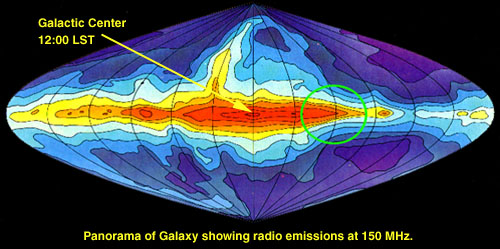 Along this line of inquiry, the Cognitive Sciences Laboratory in Palo Alto, California, has discovered a cycle during which ESP practitioners are "more" and "less" accurate in their abilities to "see" or predict events. When scientists examined the accuracy of thousands of ESP predictions, along with documented times these anomalous cognitions took place, the precognative cycle coincided with a specific Local Sidereal Time, or LST. This is the galactic time whereby the center of the Milky Way is used instead of the Sun. The peak of efficiency was not, however, at galactic "high noon" when the center of our Galaxy is directly overhead. Peak efficiency was repeatedly at 13:30 LST. This would place the center of our Galaxy on the opposite side of the sky, essentially being obscured by the earth. It may or may not be significant but it suggests that some field, with its origins in the Milky Way, is influencing our minds and inhibits psychic abilities. The same has been found for solar radiation and electromagnetic disturbances from the Sun. Psychic abilities seem to be most efficient when these activities are at their minimum. Perhaps the most interesting idea is to think of God as the originator of the universal field -- the ultimate technique whereby all energy and matter are controlled and maintained. The possibilities are truly amazing. We started this story with the possum sitting in the tree. The adaptation of this animal shows that, although we really do not fully understand the methods at work, the Darwinian concept of random mutations and millions of years of natural selection is a paradigm whose days are numbered. The techniques of life and matter are now reaching their limits with mechanistic and non-spiritual impositions. Hopefully we will some day realize our role in this unfolding drama and have a better understanding of ourselves and our destiny. Then we will be at play in the field of God. What are your thoughts?
Notes
[1] Time Magazine
[2] European Journal of Human Genetics (2006)
[3] The Selfish Gene, Dowkins, p92
[4] McDougall (1938), Forth report on a Lamarckian experiment, Brit. J. Psychol. 28, 321-345
[5] The Real Bioinformatics Revolution: Proteins and Nucleic Acids Singing to One Another? (Paper available at report@i-sis.org.uk)
[6] Bioelectromagnetics 23:488495 (2002) "Calcite Microcrystals in the Pineal Gland of the Human Brain -- First Physical and Chemical Studies", Baconnier, Lang et al.
[7] Keys of Enoch, JJ.Hurtal, Key 3-1-3, p469.
[8] Lauren E. Heystek, Hui-qiang Zhou, Prasad Dande, and Barry Gold, "Control over the Localization of Positive Charge in DNA: The Effect on Duplex DNA and RNA Stability",
J. Am. Chem. Soc., 1998, 120 (46), pp 12165-12166
COMMENTS:
|
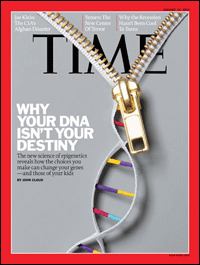 The feature article began with the story of an European farming village that endured several years of crop failure and famine. But there were also a couple of extremely plentiful years, during which the inhabitants over-ate and became gluttonous. During the glutton years, some of the children were entering puberty and subsequently got married and had families.
The feature article began with the story of an European farming village that endured several years of crop failure and famine. But there were also a couple of extremely plentiful years, during which the inhabitants over-ate and became gluttonous. During the glutton years, some of the children were entering puberty and subsequently got married and had families. The words, "The needs of the many outweigh the needs of the few (or the one)", are found in the motion picture Star Trek: The Wrath of Khan, and were spoken by the character Mr. Spock, and attributed to the Vulcan philosopher Surak. They describe (even better than Dowkins) the operational motive at work in the strategies implemented by epigenetics.
The words, "The needs of the many outweigh the needs of the few (or the one)", are found in the motion picture Star Trek: The Wrath of Khan, and were spoken by the character Mr. Spock, and attributed to the Vulcan philosopher Surak. They describe (even better than Dowkins) the operational motive at work in the strategies implemented by epigenetics.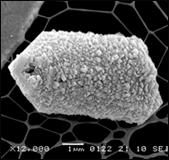
 One of the earliest types of radio was the "crystal set" [right], in which a mineral crystal was made to resonate (by tuning with a "cats whisker") with an incoming radio wave, which is simply an electromagnetic wave, propogating at the speed of light.
One of the earliest types of radio was the "crystal set" [right], in which a mineral crystal was made to resonate (by tuning with a "cats whisker") with an incoming radio wave, which is simply an electromagnetic wave, propogating at the speed of light.